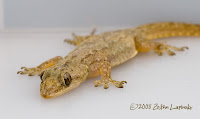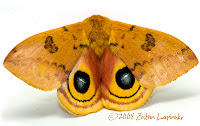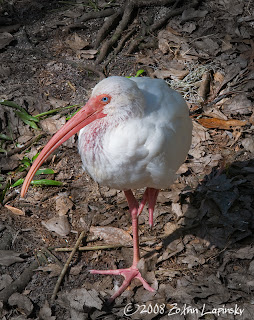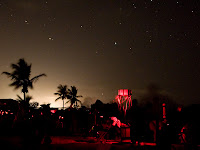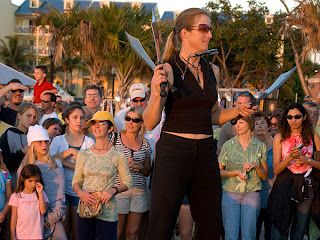“The church says the earth is flat, but I know that it is round, for I have seen the shadow on the moon, and I have more faith in a shadow than in the church."
-- Robert Ingersoll, often attributed to Ferdinand Magellan
The last total lunar eclipse to be visible in the U.S. until 2010 occurred last night. The weatherman on the local Orlando channel had been hyping it for days. He was telling viewers to go out around 10 PM, at which time the moon would be fully eclipsed. I think the best part is watching the moon as it slowly goes into the eclipse, and that was to begin at 8:45. But either way you need clear skies, or the decision to go out early or late becomes frustratingly moot.
Yesterday was cloudy all day, and the prospect of seeing the eclipse was fading. The weatherman called for a possible clearing "around 10" so we might see a part of it with some luck. At 8:15, it was totally overcast. At 8:30, I got a glimpse of the full moon through a little tiny sucker hole in the clouds. It looked hopeless.
Then -- amazingly -- the clouds began to lift! By 8:40, only wisps of clouds drifted over the moon. I set out a recliner, got my binoculars, and watched the entire eclipse in close to cloud-free conditions.
A lunar eclipse happens when the earth's shadow falls on the surface of the moon, and can only happen during a full moon. As the moon goes around the earth, its 29.5 day path will take it from a location between the sun and the earth, to one on the opposite side of the earth, and back again. When it is nearest to the sun, the sun's light falls on the far side of the moon, the side that is never seen on earth. (It is not correct to call this side the "dark" side, as it gets as much light as any other part of the moon. But we never see the far side because the moon is tidally locked with the earth, causing the same side to always face us.) When the moon's position is closest to the sun, we can't see the moon because only the part away from us is illuminated. This lunar phase is called the new moon. As the moon moves in its orbit, the lighted part gradually changes from a crescent through a gibbous (convex), and finally to full when the earth is between the sun and moon and the entire side of the moon that faces us is illuminated. It is at this time that it is possible for the Earth's shadow to fall on the moon and give us a lunar eclipse.
The eclipse began with a small segment on the moon's limb that started to darken. Bit by bit, the darkness moved over the moon, and soon I could see that the leading edge of the dark shape was actually a curve. This curve is the shadow of the edge of the earth. Aristotle (384 BCE - 322 BCE) saw this same curved line during a lunar eclipse, and concluded that the earth is must be a sphere rather than a flat shape.
As the shadow moved over the moon, it began to take on a reddish tinge, first only on the shaded limb, but eventually covering the entire moon. Normally, the light we see coming from the moon is reflected sunlight; but during an eclipse we see reflected earthlight, sunlight that has hit the earth and been reflected back into space where it can dimly illuminate the moon. But since the earth's atmosphere filters and scatters blue light (that's the answer to "Why is the sky blue?"), the light that is reflected back to the moon is the rest of the spectrum -- primarily the warm reds and oranges.
As the moon got darker, stars that were previously washed out started to pop out. When the moon was finally eclipsed and the surrounding celestial objects visible, it formed a beautiful triangle with the star Regulus, in the constellation Leo (the lion), and the planet Saturn. Jack Horkheimer, host of the PBS show “Star Gazer,” called the event “the moon, the lord of the rings and heart of the lion eclipse.”
When I finally went in and turned on the local news, I discovered that Orlando, about 60 miles away, had been totally clouded over, and the weatherman was showing eclipse images from Minnesota. But it was beautiful here in Bushnell. Selene was indeed kind to me tonight.






